Jingjing Liu
Skeleton-Snippet Contrastive Learning with Multiscale Feature Fusion for Action Localization
Dec 22, 2025Abstract:The self-supervised pretraining paradigm has achieved great success in learning 3D action representations for skeleton-based action recognition using contrastive learning. However, learning effective representations for skeleton-based temporal action localization remains challenging and underexplored. Unlike video-level {action} recognition, detecting action boundaries requires temporally sensitive features that capture subtle differences between adjacent frames where labels change. To this end, we formulate a snippet discrimination pretext task for self-supervised pretraining, which densely projects skeleton sequences into non-overlapping segments and promotes features that distinguish them across videos via contrastive learning. Additionally, we build on strong backbones of skeleton-based action recognition models by fusing intermediate features with a U-shaped module to enhance feature resolution for frame-level localization. Our approach consistently improves existing skeleton-based contrastive learning methods for action localization on BABEL across diverse subsets and evaluation protocols. We also achieve state-of-the-art transfer learning performance on PKUMMD with pretraining on NTU RGB+D and BABEL.
TCM-Eval: An Expert-Level Dynamic and Extensible Benchmark for Traditional Chinese Medicine
Nov 10, 2025Abstract:Large Language Models (LLMs) have demonstrated remarkable capabilities in modern medicine, yet their application in Traditional Chinese Medicine (TCM) remains severely limited by the absence of standardized benchmarks and the scarcity of high-quality training data. To address these challenges, we introduce TCM-Eval, the first dynamic and extensible benchmark for TCM, meticulously curated from national medical licensing examinations and validated by TCM experts. Furthermore, we construct a large-scale training corpus and propose Self-Iterative Chain-of-Thought Enhancement (SI-CoTE) to autonomously enrich question-answer pairs with validated reasoning chains through rejection sampling, establishing a virtuous cycle of data and model co-evolution. Using this enriched training data, we develop ZhiMingTang (ZMT), a state-of-the-art LLM specifically designed for TCM, which significantly exceeds the passing threshold for human practitioners. To encourage future research and development, we release a public leaderboard, fostering community engagement and continuous improvement.
Learn More, Forget Less: A Gradient-Aware Data Selection Approach for LLM
Nov 07, 2025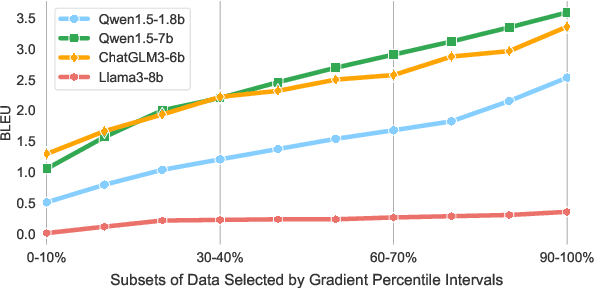
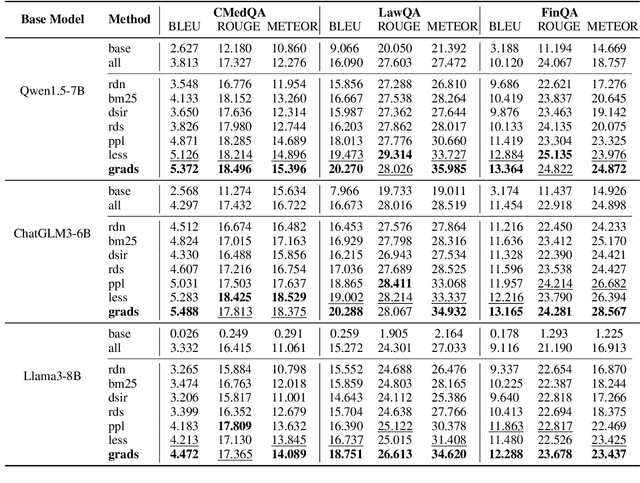
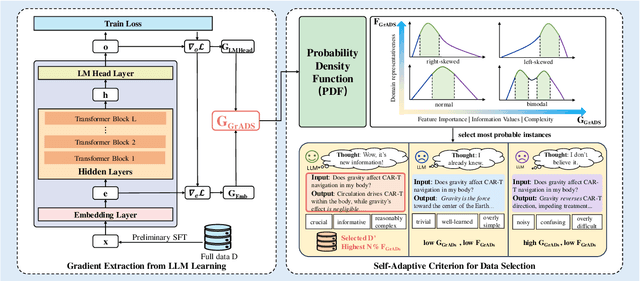
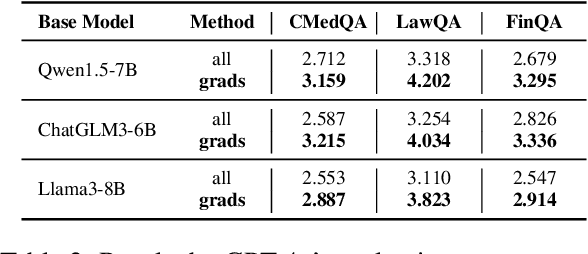
Abstract:Despite large language models (LLMs) have achieved impressive achievements across numerous tasks, supervised fine-tuning (SFT) remains essential for adapting these models to specialized domains. However, SFT for domain specialization can be resource-intensive and sometimes leads to a deterioration in performance over general capabilities due to catastrophic forgetting (CF). To address these issues, we propose a self-adaptive gradient-aware data selection approach (GrADS) for supervised fine-tuning of LLMs, which identifies effective subsets of training data by analyzing gradients obtained from a preliminary training phase. Specifically, we design self-guided criteria that leverage the magnitude and statistical distribution of gradients to prioritize examples that contribute the most to the model's learning process. This approach enables the acquisition of representative samples that enhance LLMs understanding of domain-specific tasks. Through extensive experimentation with various LLMs across diverse domains such as medicine, law, and finance, GrADS has demonstrated significant efficiency and cost-effectiveness. Remarkably, utilizing merely 5% of the selected GrADS data, LLMs already surpass the performance of those fine-tuned on the entire dataset, and increasing to 50% of the data results in significant improvements! With catastrophic forgetting substantially mitigated simultaneously. We will release our code for GrADS later.
Lightweight Deep Unfolding Networks with Enhanced Robustness for Infrared Small Target Detection
Sep 10, 2025Abstract:Infrared small target detection (ISTD) is one of the key techniques in image processing. Although deep unfolding networks (DUNs) have demonstrated promising performance in ISTD due to their model interpretability and data adaptability, existing methods still face significant challenges in parameter lightweightness and noise robustness. In this regard, we propose a highly lightweight framework based on robust principal component analysis (RPCA) called L-RPCANet. Technically, a hierarchical bottleneck structure is constructed to reduce and increase the channel dimension in the single-channel input infrared image to achieve channel-wise feature refinement, with bottleneck layers designed in each module to extract features. This reduces the number of channels in feature extraction and improves the lightweightness of network parameters. Furthermore, a noise reduction module is embedded to enhance the robustness against complex noise. In addition, squeeze-and-excitation networks (SENets) are leveraged as a channel attention mechanism to focus on the varying importance of different features across channels, thereby achieving excellent performance while maintaining both lightweightness and robustness. Extensive experiments on the ISTD datasets validate the superiority of our proposed method compared with state-of-the-art methods covering RPCANet, DRPCANet, and RPCANet++. The code will be available at https://github.com/xianchaoxiu/L-RPCANet.
RepoDebug: Repository-Level Multi-Task and Multi-Language Debugging Evaluation of Large Language Models
Sep 04, 2025Abstract:Large Language Models (LLMs) have exhibited significant proficiency in code debugging, especially in automatic program repair, which may substantially reduce the time consumption of developers and enhance their efficiency. Significant advancements in debugging datasets have been made to promote the development of code debugging. However, these datasets primarily focus on assessing the LLM's function-level code repair capabilities, neglecting the more complex and realistic repository-level scenarios, which leads to an incomplete understanding of the LLM's challenges in repository-level debugging. While several repository-level datasets have been proposed, they often suffer from limitations such as limited diversity of tasks, languages, and error types. To mitigate this challenge, this paper introduces RepoDebug, a multi-task and multi-language repository-level code debugging dataset with 22 subtypes of errors that supports 8 commonly used programming languages and 3 debugging tasks. Furthermore, we conduct evaluation experiments on 10 LLMs, where Claude 3.5 Sonnect, the best-performing model, still cannot perform well in repository-level debugging.
ShortListing Model: A Streamlined SimplexDiffusion for Discrete Variable Generation
Aug 24, 2025Abstract:Generative modeling of discrete variables is challenging yet crucial for applications in natural language processing and biological sequence design. We introduce the Shortlisting Model (SLM), a novel simplex-based diffusion model inspired by progressive candidate pruning. SLM operates on simplex centroids, reducing generation complexity and enhancing scalability. Additionally, SLM incorporates a flexible implementation of classifier-free guidance, enhancing unconditional generation performance. Extensive experiments on DNA promoter and enhancer design, protein design, character-level and large-vocabulary language modeling demonstrate the competitive performance and strong potential of SLM. Our code can be found at https://github.com/GenSI-THUAIR/SLM
MemAgent: Reshaping Long-Context LLM with Multi-Conv RL-based Memory Agent
Jul 03, 2025
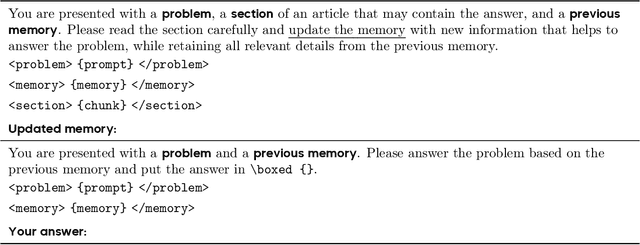
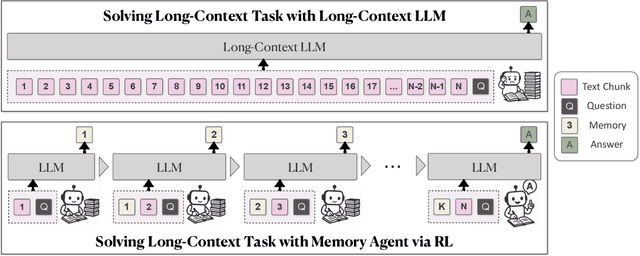

Abstract:Despite improvements by length extrapolation, efficient attention and memory modules, handling infinitely long documents with linear complexity without performance degradation during extrapolation remains the ultimate challenge in long-text processing. We directly optimize for long-text tasks in an end-to-end fashion and introduce a novel agent workflow, MemAgent, which reads text in segments and updates the memory using an overwrite strategy. We extend the DAPO algorithm to facilitate training via independent-context multi-conversation generation. MemAgent has demonstrated superb long-context capabilities, being able to extrapolate from an 8K context trained on 32K text to a 3.5M QA task with performance loss < 5% and achieves 95%+ in 512K RULER test.
STAR-Net: An Interpretable Model-Aided Network for Remote Sensing Image Denoising
May 30, 2025Abstract:Remote sensing image (RSI) denoising is an important topic in the field of remote sensing. Despite the impressive denoising performance of RSI denoising methods, most current deep learning-based approaches function as black boxes and lack integration with physical information models, leading to limited interpretability. Additionally, many methods may struggle with insufficient attention to non-local self-similarity in RSI and require tedious tuning of regularization parameters to achieve optimal performance, particularly in conventional iterative optimization approaches. In this paper, we first propose a novel RSI denoising method named sparse tensor-aided representation network (STAR-Net), which leverages a low-rank prior to effectively capture the non-local self-similarity within RSI. Furthermore, we extend STAR-Net to a sparse variant called STAR-Net-S to deal with the interference caused by non-Gaussian noise in original RSI for the purpose of improving robustness. Different from conventional iterative optimization, we develop an alternating direction method of multipliers (ADMM)-guided deep unrolling network, in which all regularization parameters can be automatically learned, thus inheriting the advantages of both model-based and deep learning-based approaches and successfully addressing the above-mentioned shortcomings. Comprehensive experiments on synthetic and real-world datasets demonstrate that STAR-Net and STAR-Net-S outperform state-of-the-art RSI denoising methods.
Bi-Level Unsupervised Feature Selection
May 26, 2025Abstract:Unsupervised feature selection (UFS) is an important task in data engineering. However, most UFS methods construct models from a single perspective and often fail to simultaneously evaluate feature importance and preserve their inherent data structure, thus limiting their performance. To address this challenge, we propose a novel bi-level unsupervised feature selection (BLUFS) method, including a clustering level and a feature level. Specifically, at the clustering level, spectral clustering is used to generate pseudo-labels for representing the data structure, while a continuous linear regression model is developed to learn the projection matrix. At the feature level, the $\ell_{2,0}$-norm constraint is imposed on the projection matrix for more effectively selecting features. To the best of our knowledge, this is the first work to combine a bi-level framework with the $\ell_{2,0}$-norm. To solve the proposed bi-level model, we design an efficient proximal alternating minimization (PAM) algorithm, whose subproblems either have explicit solutions or can be computed by fast solvers. Furthermore, we establish the convergence result and computational complexity. Finally, extensive experiments on two synthetic datasets and eight real datasets demonstrate the superiority of BLUFS in clustering and classification tasks.
Robust Orthogonal NMF with Label Propagation for Image Clustering
Apr 30, 2025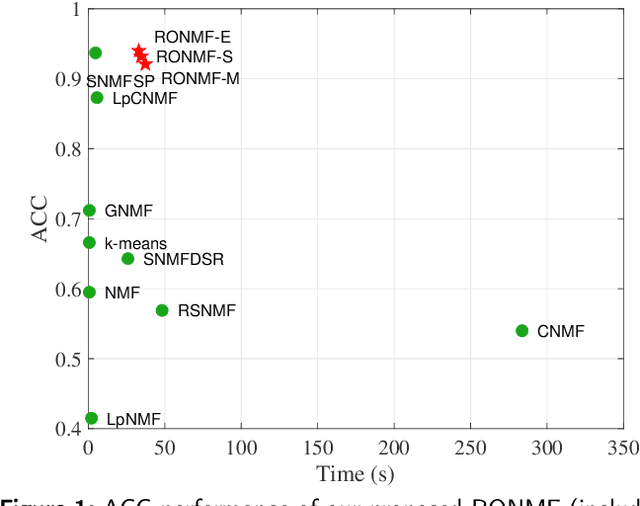
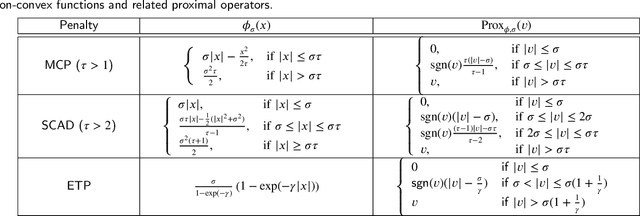
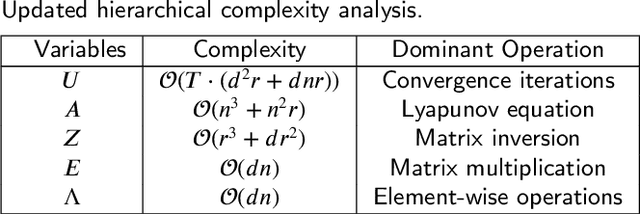
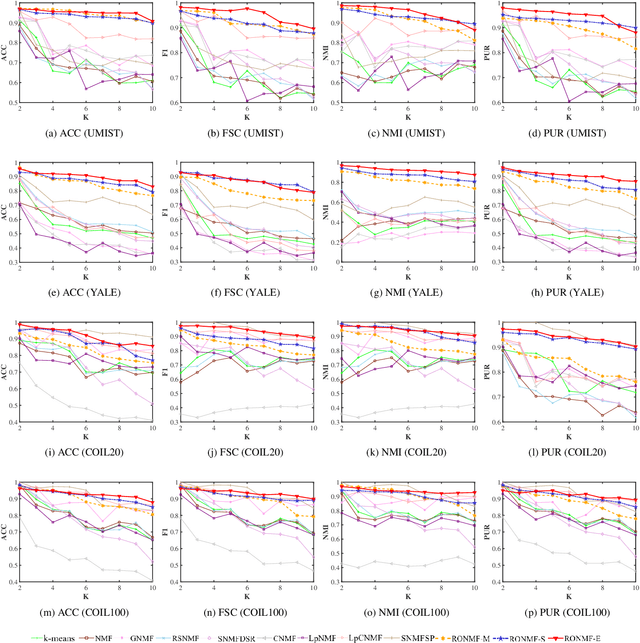
Abstract:Non-negative matrix factorization (NMF) is a popular unsupervised learning approach widely used in image clustering. However, in real-world clustering scenarios, most existing NMF methods are highly sensitive to noise corruption and are unable to effectively leverage limited supervised information. To overcome these drawbacks, we propose a unified non-convex framework with label propagation called robust orthogonal nonnegative matrix factorization (RONMF). This method not only considers the graph Laplacian and label propagation as regularization terms but also introduces a more effective non-convex structure to measure the reconstruction error and imposes orthogonal constraints on the basis matrix to reduce the noise corruption, thereby achieving higher robustness. To solve RONMF, we develop an alternating direction method of multipliers (ADMM)-based optimization algorithm. In particular, all subproblems have closed-form solutions, which ensures its efficiency. Experimental evaluations on eight public image datasets demonstrate that the proposed RONMF outperforms state-of-the-art NMF methods across various standard metrics and shows excellent robustness. The code will be available at https://github.com/slinda-liu.
 Add to Chrome
Add to Chrome Add to Firefox
Add to Firefox Add to Edge
Add to Edge